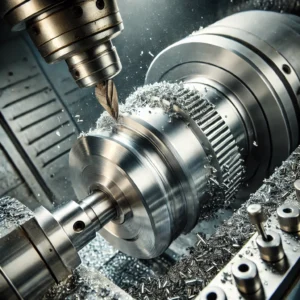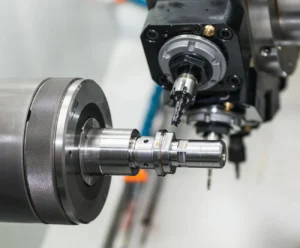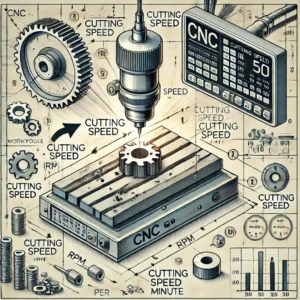Choosing the right cutting speed is crucial in CNC milling, influencing both the quality of the final product and the efficiency of the machining process. This article summarizes key factors affecting cutting speed, discusses its implications, and offers insights specific to your CNC machining services.

Summary of Key Factors
Cutting speed in CNC machining refers to the speed at which the cutting tool engages the material. The optimal speed is dictated by material type, tool material, and the desired finish. A careful balance between these factors can lead to enhanced productivity and reduced costs.
1. Understanding Cutting Speed
Cutting speed is defined as the speed at which the cutting edge of the tool moves through the material, typically measured in meters per minute (m/min) or feet per minute (ft/min). It is essential to note that different materials require different cutting speeds for optimal machining efficiency.
2. Factors Influencing Cutting Speed
Several factors determine the appropriate speed:
- Material Hardness: Softer materials can tolerate higher speeds, while harder materials may require slower speeds to prevent tool wear.
- Tool Material: High-speed steel (HSS) tools operate at lower speeds compared to carbide tools, which can endure higher cutting speeds.
- Machining Conditions: The condition of the workpiece and the type of coolant used can also influence speed.
3. Calculating Cutting Speed
The formula for calculating cutting speed (V) is:
V=π×D×S1000V = \frac{\pi \times D \times S}{1000}
Where:
- DD = Diameter of the tool or workpiece
- SS = Spindle speed in revolutions per minute (RPM)
4. Feed Rate: A Crucial Companion to Cutting Speed
Feed rate, the distance the tool advances during one spindle revolution, is another vital parameter. It is calculated as:
Feed Rate=Chip Load×Number of Teeth×Spindle RPM\text{Feed Rate} = \text{Chip Load} \times \text{Number of Teeth} \times \text{Spindle RPM}
Understanding how to balance feed rate with speed is essential for achieving desired results.
5. Depth of Cut
Depth of cut refers to the thickness of material removed in one pass and is often expressed in millimeters. It is a critical factor as it impacts both cutting speed and feed rate.
6. Optimizing CNC Milling Parameters
For optimal performance, CNC milling parameters—cutting speed, feed rate, and depth of cut—should be carefully selected. Adjusting these parameters can lead to significant improvements in machining efficiency and part quality.
7. Importance of Proper Tool Selection
The selection of the right tool is pivotal for efficient CNC machining. Factors such as tool geometry, coating, and material should be considered to ensure that the tool can withstand the required speeds without excessive wear.
8. The Role of Coolants in CNC Machining

Using the right coolant can significantly affect speed. Coolants help dissipate heat and reduce friction, allowing for higher speeds without compromising tool integrity.
9. Real-World Applications: Automotive and Machine Building
Industries such as automotive, machine building, and automation rely heavily on precision CNC machining. The choice of cutting speed plays a vital role in producing components that meet strict tolerances and performance requirements.
10. Conclusion and Call to Action
Selecting the right speed is not just a technical decision; it is integral to the success of your machining operations. If you’re looking for high-quality CNC machining services, CNCRUSH offers over 12 years of expertise in providing CNC milled parts and CNC turned parts, specializing in automotive and machine building applications.
Tables and Data Analysis

Table 1: Recommended Cutting Speeds for Common Materials
| Material | Speed (m/min) | Tool Material |
|---|---|---|
| Aluminum | 250 – 400 | Carbide |
| Steel | 60 – 120 | HSS |
| Brass | 150 – 300 | Carbide |
| Plastic | 100 – 200 | HSS or Carbide |
Table 2: Factors Affecting Feed Rate
| Factor | Description |
|---|---|
| Tool Size | Larger tools can handle higher feed rates. |
| Desired Surface Finish | Finer finishes often require slower feed rates. |
| Material Characteristics | Softer materials allow for faster feed rates. |
FAQ Section
Q1: How does cutting speed affect tool life?
A1: Higher speeds can lead to increased tool wear, while slower speeds may prolong tool life but can reduce productivity.
Q2: What is the best way to determine cutting speed for a new material?
A2: Start with the manufacturer’s recommendations and adjust based on trial runs, monitoring tool wear and finish quality.
By integrating the above insights and focusing on the critical aspects of CNC machining, this article aims to provide comprehensive guidance for anyone looking to optimize their CNC milling processes. For more information and specialized CNC machining services, visit CNCRUSH.
